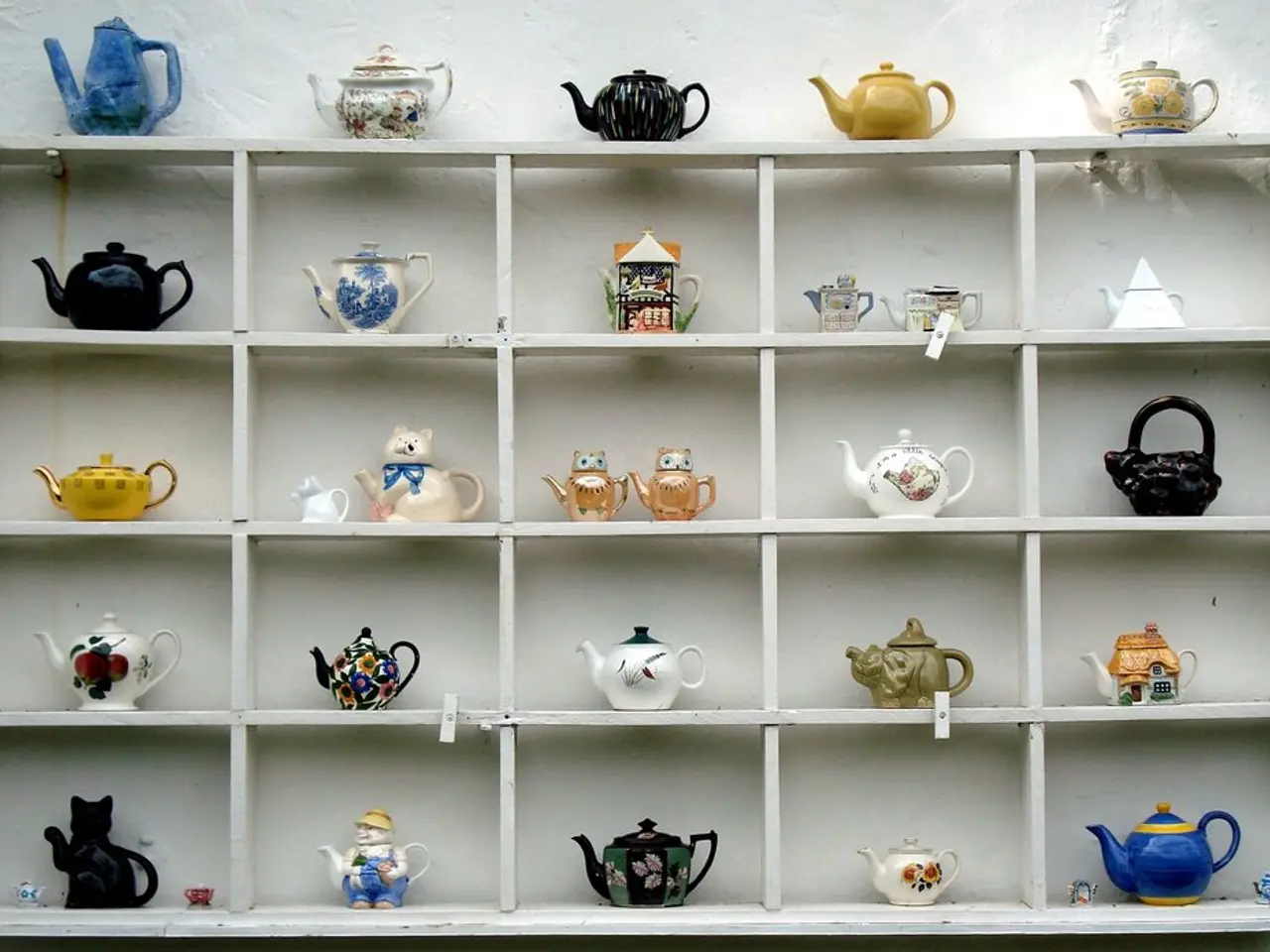Exploring Ceramics and Pottery: A Detailed Introduction for Novices
In the realm of art and craft, two terms often intertwine: pottery and ceramics. While they may seem synonymous, they represent distinct realms in the world of clay creations.
Pottery, a subset of ceramics, is primarily focused on making functional or decorative objects from clay, often by hand or wheel-throwing. The result is a diverse range of items such as pots, bowls, and vases. Ceramics, on the other hand, is a broader category that includes all products made by heating and hardening clay or other inorganic materials. This expansive field encompasses pottery but also industrial, technological, and advanced materials like tiles, electronic components, and bio-ceramics.
Materials:
Pottery typically employs natural clay types like terracotta, which is porous and has an orange colour. It is shaped mainly by hand or on a potter’s wheel, and glazing is used for decoration and sealing. Ceramics, however, include a variety of materials such as earthenware, stoneware, porcelain, and bone china, which incorporate clay combined with additives like feldspar or quartz. Porcelain and bone china are finer and stronger compared to common ceramics.
Processes:
The process of pottery involves shaping clay (hand-building or wheel throwing), drying, bisque firing, glazing, and glazing firing at moderate temperatures. The focus is on functional, everyday vessels or artistic forms. Ceramics manufacturing can be conventional (like pottery and tiles) or advanced (used in aerospace, electronics, medical devices). Key steps include raw material preparation, shaping (pressing, casting), drying, glazing, and sintering—a high-temperature process that bonds particles without melting the material, enhancing strength and density.
Applications:
Pottery is primarily for functional or decorative household objects, such as dishes, pots, and vases. It also serves artistic and cultural roles. Ceramics, however, have a broader range: from traditional pottery to structural ceramics (turbine blades, armor), bio-ceramics (bone implants, dental devices), and advanced technological components used in electronics and aerospace. Thus, pottery is a traditional art and craft form focused on clay vessels, while ceramics is an encompassing category that includes pottery but extends to advanced materials with varied industrial and medical uses.
Throughout history, pottery has played a crucial role in cultural identity, with different regions having specific styles that reflect local customs, beliefs, and resources. The art of pottery involves various techniques, each contributing to the unique character and functionality of the finished piece. From the intricate designs of Middle Eastern pottery to the rustic simplicity of Mediterranean styles, understanding these various approaches can inspire beginners to explore different approaches and discover their artistic preferences.
Whether functional or decorative, pottery continues to captivate artists and enthusiasts alike, showcasing creativity, skill, and the rich cultural history that underpins this ancient art form.
- In the realm of art and craft, one may delve into the field of education-and-self-development to learn various techniques in pottery, a traditional art form that focuses on creating functional or decorative objects from clay.
- While ceramics is a broader category encompassing all products made by heating and hardening clay or other materials, learning about ceramics can also provide insights into the diverse range of materials and processes used in the production of ceramics, such as pottery, tiles, and advanced materials like earthedware, stoneware, porcelain, and bio-ceramics.
- Beyond functional or decorative household objects, learning about ceramics could extend one's knowledge to the vast applications of this material in advanced technology and medicine, such as aerospace, electronics, medical devices, and bio-ceramics used in bone implants and dental devices.




